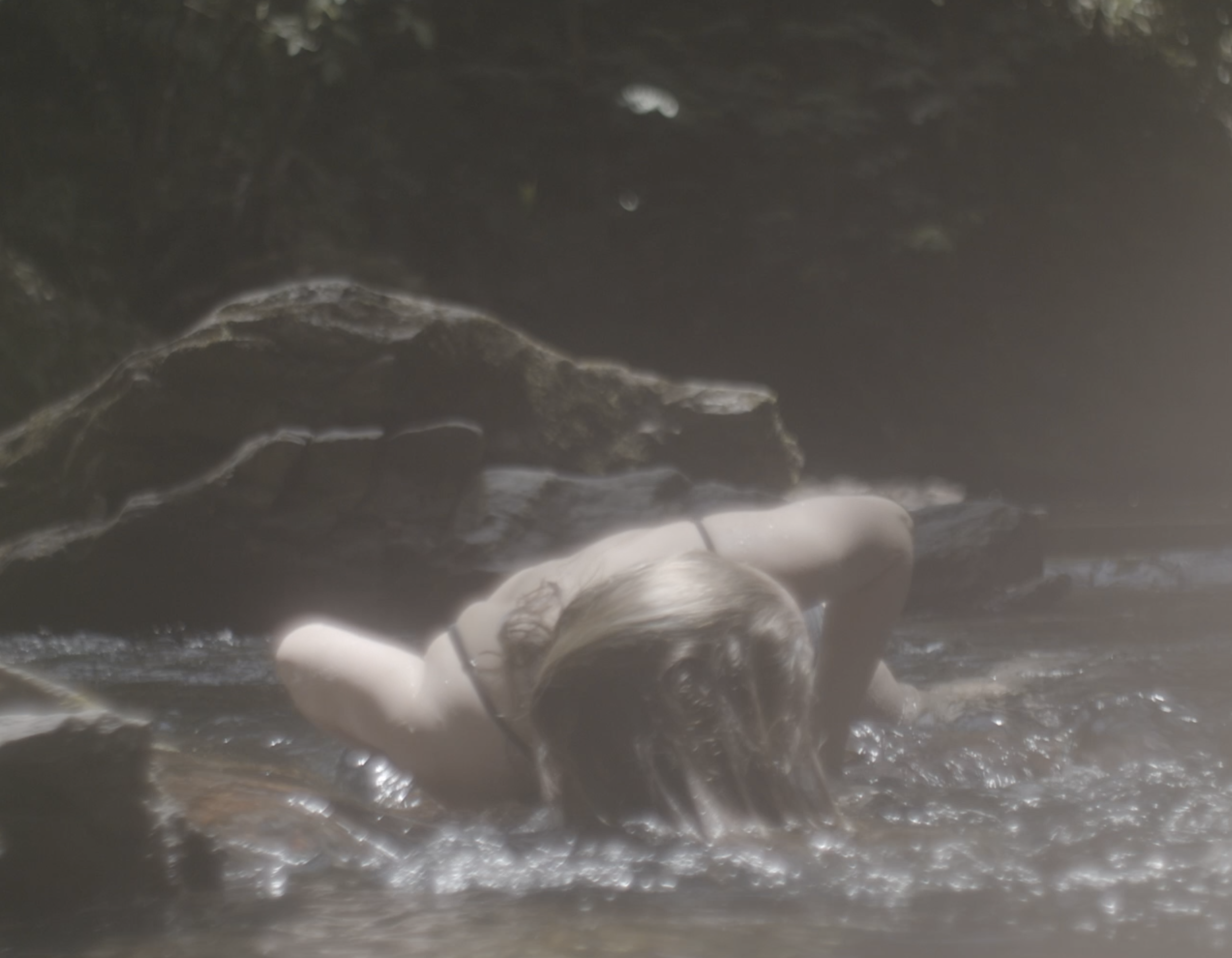IMPRINTS
“My frustration lay in my inability to articulate the anatomy of anguish. Having an opportunity to return to the environment within which I was raised, and where my formative encounters with sexual abuse occurred, I was able to access something within myself creatively and intuitively.”
ARTIST’S STATEMENT
Imprints was born out of a need to re-enact and communicate an intangible, internal state that arose as a response to trauma. The project is an honest examination that seeks to return agency to the subject through the acts of being seen and heard, without re:victimizing or glorifying that subject.
Upon entering the space, three large landscapes and a disorienting soundscape confront the viewer. The images function as a prelude while simultaneously acting as a barrier to accessing the psychological exhibition space. Upon walking further into the space, the viewer encounters the two video installations that sit in opposition to one another. On one wall, a video of the artist’s body lying on the shoreline and being tossed in the waves faces another video wherein the subject is watched as she moves through the rapids of a river. Though both utilize water and sense of place as a central motif, they are nuanced in their approach, as one speaks to the passivity of the subject whilst the other is more actively engaged and resistant. Large-scale video projections and an unsettling soundscape encourage the viewer to embody an uncomfortable physical space, representative of the internal space of a traumatized person. Imprints confronts the psychological and physical condition of a survivor of sexual abuse, and presents the connection between trauma and its lasting imprint on the body and human psyche.
In creating this piece, my initial fascination was concentrated on the way in which the human body stores traumatic memory. According to brain image scanning, whilst an individual is experiencing heightened anxiety or flashbacks related to trauma, the speech center of the brain, known as the “Broca’s area”, becomes impaired. This explains why survivors of trauma often have such a difficult time fluently expressing their story and emotional experiences. Art psychotherapy and somatic theories look beyond the limitations of the traditional talk therapy model, toward integrating art, the body and the holistic being into the healing process.
Central to this project is an exploration of alternative modalities of storytelling, an emphasis on experimentation, along with performance and the process of creation itself as an access point to the parts of stored memory that aren’t articulate through words. The works of feminist artists Francesca Woodman and Ana Mendieta were formative in the way in which I approached using the female body particularly in relation to space. Mendieta, in particular, used performance as a way to address the violence enacted against female bodies, provoking conversations about women’s rights, violence and safety.
As the project progressed, discussions of intergenerational trauma and the land as containing memory of traumas past arose. When trying to produce this project in Toronto, I felt an extreme disconnect from the images, and particularly from the environment. My frustration lay in my inability to articulate the anatomy of anguish. Having an opportunity to return to the environment within which I was raised, and where my formative encounters with sexual abuse occurred, I was able to access something within myself creatively and intuitively.
Water, riddled with contradictions, is a central motif within this work. Water can be interpreted as life-giving in its association with growth, renewal and rebirth. Alternatively, it’s possibility to be tempestuous, formless and chaotic directly opposes our inclination to associate it with tranquility. In the same way that water can be life-giving, it can also be suffocating and take life. In both senses there is a return to the womb; the womb of the Earth and of woman. It is both the beginning, and the end. It is cyclical in nature.
Religiously, water is an incredibly fertile grounds for symbolism. In Hindi and Buddhist traditions, the river in particular has been written of as a path toward enlightenment and higher consciousness. In Christian and Catholic traditions, water is used during baptism as a symbol of purification. Coming from a heavily Roman Catholic Trinidadian society and family, this notion of water as having the capability to take away sin, of figuratively removing the stain of shame so that one may be admitted into the faith, is problematized within my work.
The question becomes how one navigates an internal space fraught with tension, when an entire society insists you are shameful; despite the fact that you were raped. What can Baptism do for me then?
